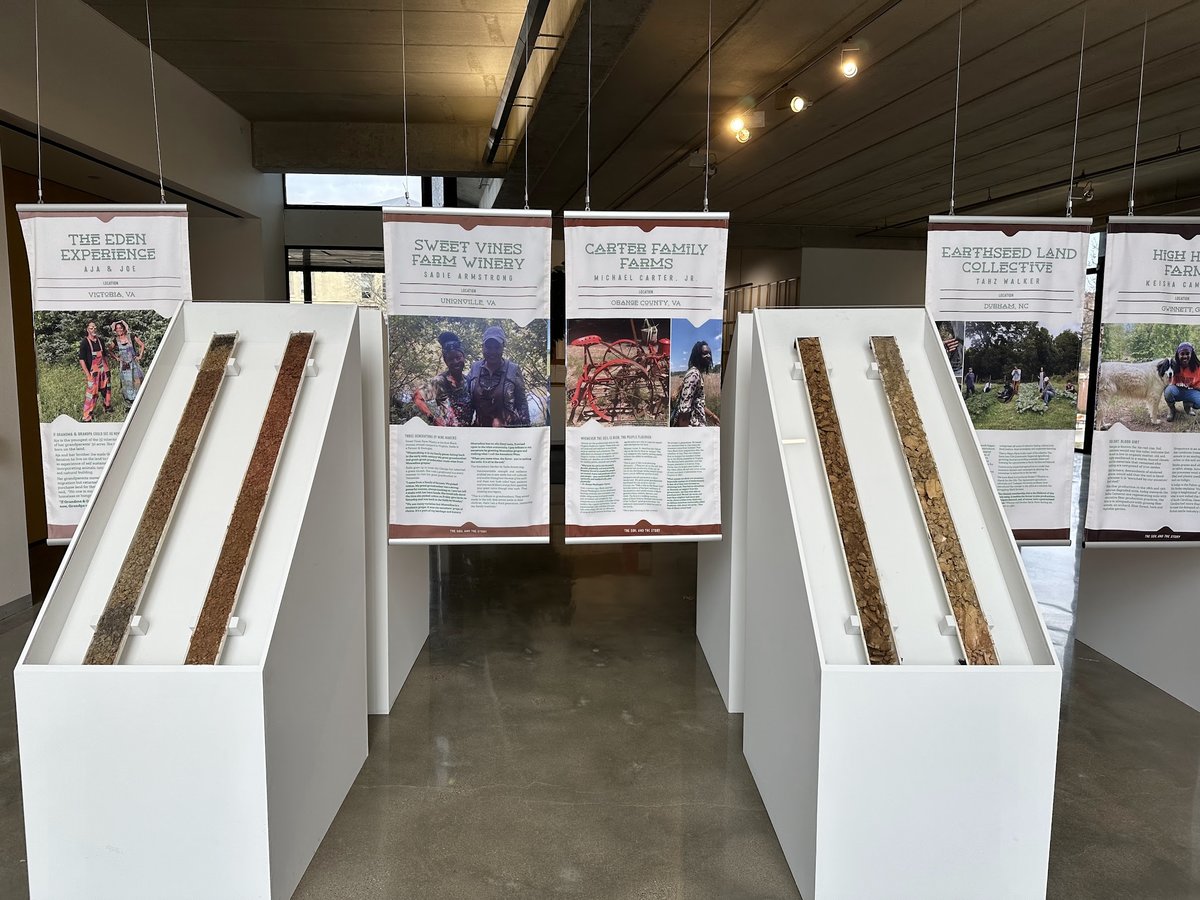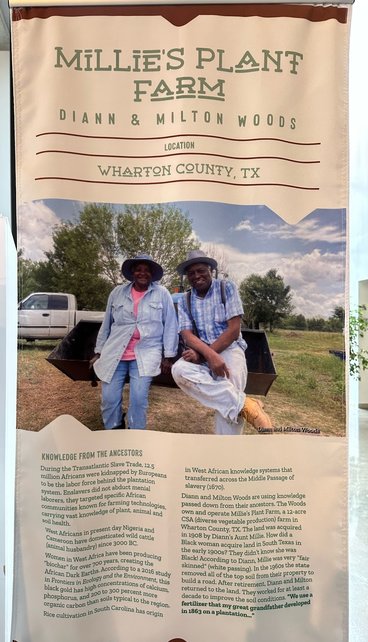
Black farmers are at the heart of LAAS graduate student Tiffany LaShae’s exhibition: The Soil and the Story. Once a cretaceous shallow sea, the Black Belt formed over millions of years to create an emphatically dark, rich soil stretching in a crescent shape from Mississippi up through the Carolinas. This fertile soil region is at the heart of the Deep South and has had a lasting impact on American history. The Black Belt still has geographic, political, and socioeconomic impacts in the modern era.
Farming in general is a tough business, but being a Black farmer adds a whole extra layer of complexity. From systemic discrimination from the USDA by limiting access to low-interest loans and grants for over a century, to land rights and ownership legal issues, it is no wonder that many left the Black Belt in the Great Migration. But as Tiffany’s work demonstrates, many Black farmers never left, and some are returning to land bought by their grandparents many decades ago.

The Soil and the Story recognizes the trauma and endurance that Black Americans still face in this region today. Each story has a different connection to history: some are near Civil Rights historical sites, some on land their ancestors struggled to farm without help their white neighbors were able to access, and still others who incorporate African and Indigenous knowledge into their practices that have been passed down through enslavement and genocide. Each of the twelve farms in the exhibit has deep ties to the past but also hope for the future and connections to their communities.
Tiffany combines these stories with soil profiles from each farm. The text and soil profiles tell the story of the land, and the people who are dedicated to its stewardship. The text and soil profiles tell the story of the land, the people who are dedicated to its stewardship, and how diverse the region is pedologically and culturally. Though they are all in the Black Belt, clay and organic matter vary greatly across the profiles, leading to varying levels of fertility, and approaches to farming across the sites.
The Soil and the Story exhibition is in the HGA Gallery in Rapson Hall on the East Bank campus through April 19th.
Join us on April 16, 2024 for a SWAC field trip over to the East Bank to support Tiffany and this collaborative exhibition. We will leave Borlaug Hall at 3:45pm to head down to catch the shuttle over to East Bank. The exhibition reception goes from 4 to 6 pm but you are welcome to filter back to the St. Paul campus via shuttle as your schedule demands.
Tiffany LaShae’s research was supported by:
- UMN Institute for Advanced Studies Research and Creative Collaborative Grant
- Soil Health Institute
- Anonymous Donor Supporting Equity in Graduate Education
- UMN College of Food, Agricultural, and Natural Resource Sciences
- UMN Graduate School
